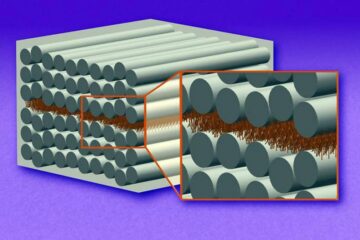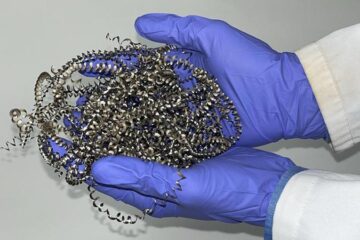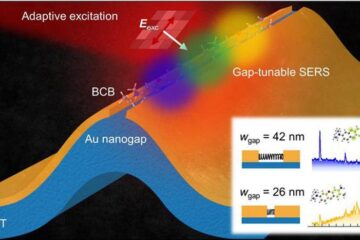Geometry Affects Drift and Diffusion Across Entropic Barriers

In a uniform cylinder, both the mobility and the diffusion coefficient of the particle are independent of the driving force. This is not true, however, when the cylinder diameter varies. Constrictions provide periodic entropic barriers, which slow down drift and diffusion when the driving force is weak. This research examined two types of cylinders.
In the first, a tube consisted of sequential spherical compartments connected by small circular openings. The driving force suppressed the slowdown due to the constrictions. The particle subjected to a strong driving force showed no change in effective diffusion coefficient or mobility as a result of the periodic restrictions. In a tube of cylindrical chambers, however, the results were dramatically different. Under a strong driving force, mobility decreased while the diffusion coefficient became extremely large due to intermittency that occurred in the particle transitions between openings connecting neighboring compartments.
While author Alexander Berezhkovskii of the National Institutes of Health acknowledges that the original idea for the project was inspired by devices that deliver drugs locally in small amounts, he looks at the research as a quest for a broader understanding. “Nature is very complicated because of geometry, but we are looking for something simple that underlies the complexity,” he says.
The article, “Drift and diffusion in a tube of periodically varying diameter. Driving force induced intermittency” by Alexander Berezhkovskii et al will appear in the Journal of Chemical Physics. See: http://jcp.aip.org/
Journalists may request a free PDF of this article by contacting jbardi@aip.org.
ABOUT THE JOURNAL OF CHEMICAL PHYSICS
The Journal of Chemical Physics publishes concise and definitive reports of significant research in methods and applications of chemical physics. Innovative research in traditional areas of chemical physics such as spectroscopy, kinetics, statistical mechanics, and quantum mechanics continue to be areas of interest to readers of JCP. In addition, newer areas such as polymers, materials, surfaces/interfaces, information theory, and systems of biological relevance are of increasing importance. Routine applications of chemical physics techniques may not be appropriate for JCP. Content is published online daily, collected into four monthly online and printed issues (48 issues per year); the journal is published by the American Institute of Physics. See: http://jcp.aip.org/
ABOUT AIP
The American Institute of Physics is a federation of 10 physical science societies representing more than 135,000 scientists, engineers, and educators and is one of the world's largest publishers of scientific information in the physical sciences. Offering partnership solutions for scientific societies and for similar organizations in science and engineering, AIP is a leader in the field of electronic publishing of scholarly journals. AIP publishes 12 journals (some of which are the most highly cited in their respective fields), two magazines, including its flagship publication Physics Today; and the AIP Conference Proceedings series. Its online publishing platform Scitation hosts nearly two million articles from more than 185 scholarly journals and other publications of 28 learned society publishers.
Media Contact
More Information:
http://www.aip.orgAll latest news from the category: Physics and Astronomy
This area deals with the fundamental laws and building blocks of nature and how they interact, the properties and the behavior of matter, and research into space and time and their structures.
innovations-report provides in-depth reports and articles on subjects such as astrophysics, laser technologies, nuclear, quantum, particle and solid-state physics, nanotechnologies, planetary research and findings (Mars, Venus) and developments related to the Hubble Telescope.
Newest articles

“Nanostitches” enable lighter and tougher composite materials
In research that may lead to next-generation airplanes and spacecraft, MIT engineers used carbon nanotubes to prevent cracking in multilayered composites. To save on fuel and reduce aircraft emissions, engineers…

Trash to treasure
Researchers turn metal waste into catalyst for hydrogen. Scientists have found a way to transform metal waste into a highly efficient catalyst to make hydrogen from water, a discovery that…

Real-time detection of infectious disease viruses
… by searching for molecular fingerprinting. A research team consisting of Professor Kyoung-Duck Park and Taeyoung Moon and Huitae Joo, PhD candidates, from the Department of Physics at Pohang University…





















